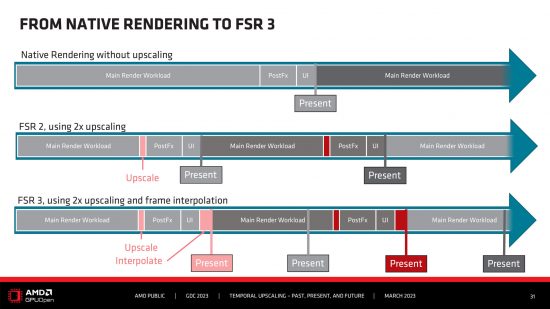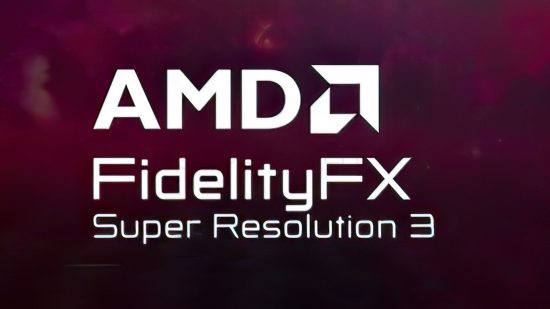New details of AMD FSR 3 frame generation have emerged that suggest it will be able to generate up to four completely new interpolated frames, providing a five-fold increase in frame rate. That compares to Nvidia’s DLSS 3 technology, which is limited to one interpolated frame in between each ‘real’ frame for an effective doubling of frame rate.
FidelityFX Super Resolution or FSR is AMD’s upscaling technology used to help boost resolution and frame rate while reducing the load on your GPU. It’s analogous to Nvidia DLSS technology and like DLSS it has progressed in its capability over the years.

FSR 1 was a simple upscaling algorithm that could take a lower-resolution frame and scale it up to a higher resolution. FSR 2 added the ability to compare previous frame data to make for a better guess at how the next upscaled image should look – it was roughly equivalent to DLSS 2 as we explored in our FSR 2 vs DLSS 2 feature. Now, the upcoming FSR 3 will add frame generation where entirely new frames are rendered in between ‘real’ conventionally rendered frames – again, this is analogous to DLSS 3.
The new details of FSR 3 have been revealed via a GitHub posting for the latest GPUOpen code (AMD’s open-source middleware suite for software developers) with the details being spotted by @Kepler_L2.
Among the many lines of code is a line that reads ‘uint32 frameGenRatio : 4; ///< Frame generation ratio’. This frameGenRatio parameter having a value of four suggests the upcoming frame generation mode of FSR 3 will be able to generate up to four new frames for each conventional frame. It’s possible that this isn’t exactly what this ratio refers to but it’s the most reasonable interpretation.
If FSR 3 does allow for up to four interpolated frames to be generated, it would quadruple the number that Nvidia currently offers with DLSS 3, which can only provide one interpolated frame in between each conventional frame. However, we wouldn’t be surprised if Nvidia could fairly quickly offer a revised version of DLSS 3 that also extends its frame generation ratio.
Moreover, we’re a little skeptical that interpolating up to four frames would result in satisfactory image quality and responsiveness. That would mean only one in every five frames shown on screen is actually based on newly updated game data. If it really can deliver the goods, though, it could be mighty impressive.
Elsewhere, it’s also being reported that FSR 3 may require AMD driver support, essentially locking it down to only work on AMD graphics cards. This would be in contrast to FSR 1 and FSR 2 and more generally go against AMD’s tendency to push for open-source features.
However, it may well be that it simply needs to use certain AMD hardware-specific features to get this code to work. If that’s the case, it could suggest that only the company’s latest GPUs, such as the Radeon RX 7900 XTX or Radeon RX 7600, will support the technology, but we’ll have to wait and see on that front.
Are you excited about AMD FSR 3? Let us know your thoughts via the Custom PC Facebook page, or Twitter, or join our Custom PC and Gaming Setup Facebook group and tap into the knowledge of our 375,000+ members. Also, check out our best graphics card list for our current top GPU choices, regardless of which version of DLSS of FSR they support.
